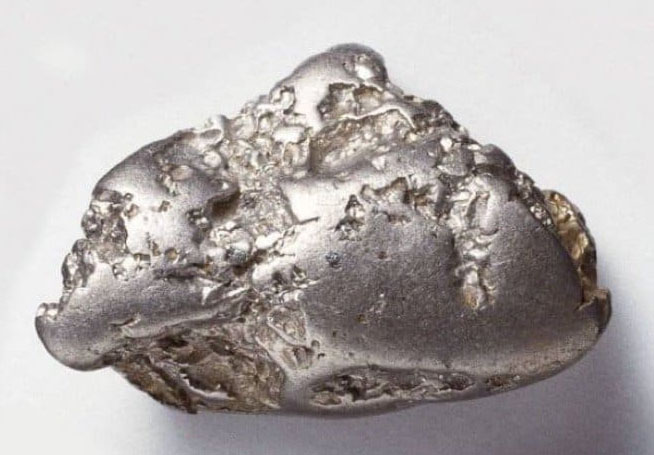
Rhodium was discovered in 1803 by William Hyde Wollaston, soon after his discovery of palladium. He used crude platinum ore presumably obtained from South America.[11] His procedure involved dissolving the ore in aqua regia and neutralizing the acid with sodium hydroxide (NaOH). He then precipitated the platinum as ammonium chloroplatinate by adding ammonium chloride (NH
4Cl). Most other metals like copper, lead, palladium and rhodium were precipitated with zinc. Diluted nitric acid dissolved all but palladium and rhodium. Of these, palladium dissolved in aqua regia but rhodium did not,and the rhodium was precipitated by the addition of sodium chloride as Na3[RhCl6]·nH2O. After being washed with ethanol, the rose-red precipitate was reacted with zinc, which displaced the rhodium in the ionic compound and thereby released the rhodium as free metal.
After the discovery, the rare element had only minor applications; for example, by the turn of the century, rhodium-containing thermocouples were used to measure temperatures up to 1800 °C
They have exceptionally good stability in the temperature range of 1300 to 1800 °C.
The first major application was electroplating for decorative uses and as corrosion-resistant coating.The introduction of the three-way catalytic converter by Volvo in 1976 increased the demand for rhodium. The previous catalytic converters used platinum or palladium, while the three-way catalytic converter used rhodium to reduce the amount of NOx in the exhaust.
Rhodium is a hard, silvery, durable metal that has a high reflectance. Rhodium metal does not normally form an oxide, even when heated.Oxygen is absorbed from the atmosphere only at the melting point of rhodium, but is released on solidification.Rhodium has both a higher melting point and lower density than platinum. It is not attacked by most acids: it is completely insoluble in nitric acid and dissolves slightly in aqua regia.